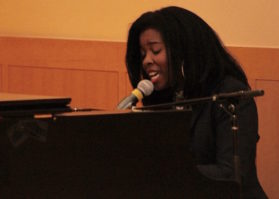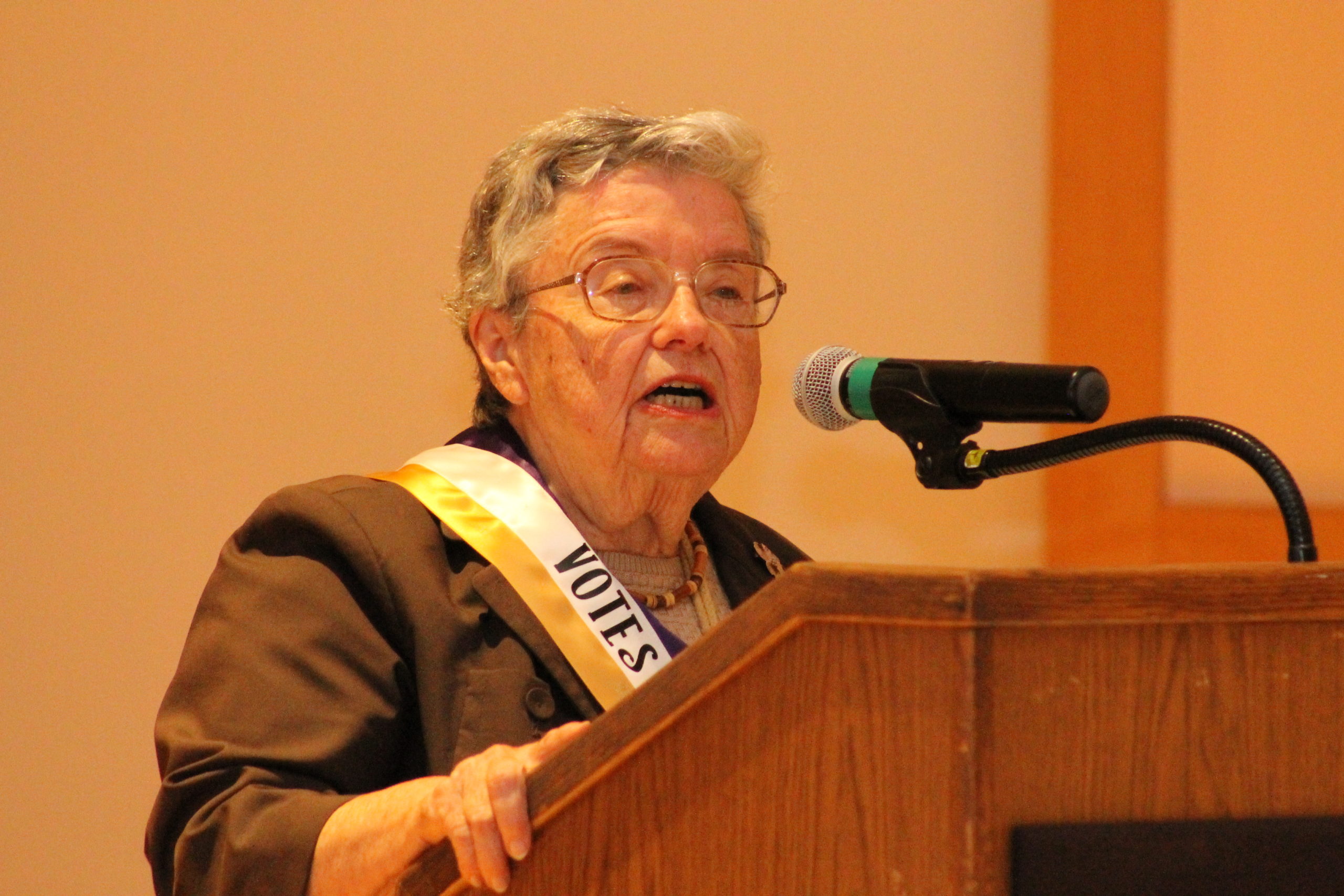North Shore women on Friday celebrated the centennial anniversary of gaining the right to vote in New York, three years before the 19th Amendment was ratified nationally in 1920.
Hosted by the Women’s Group of the Unitarian Universalist Congregation at Shelter Rock, the program “Freedom Sisters and Suffragists: a Celebration of Women” focused on the inclusion of all women, not just certain races.
Georgette Grier-Key, Association of Suffolk County Historical Societies president, said in her opening remarks she was tired of attending segregated women’s history month programs every year in March.
“Long Island, as a whole, has a rich history concerning women — Native and African-American women,” Grier-Key said. “Too often, their histories are hidden in plain sight. Native and African-American women on Long Island owned land before the law allowed. They mirrored matriarchal society and communities, and they were listed as heads of households on the U.S. Census reports.”

Judith Wylie-Rosett, president of the Women’s Group, said the event was designed to celebrate the work women did to gain the right to vote through the end of the 1800s and into the early 1900s.
“After the election, I realized the right to vote is very important and something we can’t take for granted and that we need to celebrate winning that right and celebrate getting people to vote as a responsibility,” Wylie-Rosett said. “In the United States, so many people have the right to vote but don’t vote, and in other parts of the world, people would die for the right to vote. We need to cherish that privilege we have and consider it a responsibility.”
On display during the event was a six-panel traveling portion of the New York State Museum’s Votes for Women exhibit, spanning from the 1848 Seneca Falls Convention through 1917.

Ten women read monologues as different women’s rights activists, including Coretta Scott King, Elisabeth Freeman, Susan B. Anthony and Harriet Tubman. Music during the night was provided by Sheree M.C. Elder.
Natalie Naylor, president of the Nassau County Historical Society, read as both General Rosalie Gardiner Jones and Elizabeth Cady Stanton.
Jones was from Cold Spring Harbor and plunged into the movement in 1912 when she began delivering speeches across Long Island with Freeman. She later garnered national attention after hiking from New York City to Albany that December.
“The pilgrimage took us 12 days to cover more than 150 miles,” Naylor read as Jones. “Some joined us along the way, but only five of us walked the full distance. It was December, and we encountered mud, cold, wind and snow along the way. Some, including my mother who was an anti-suffragist, said it was ridiculous, but it resulted in great publicity for suffrage and we delivered our petition to the new governor.”
Jones later led a march from Newark to Washington, D.C., before leaving the movement in 1915, studying to become an auto mechanic and a car saleswoman.
“I think my words will resonate in coming years, even after suffrage has been achieved, as I know it will be,” Naylor read from a passage written by Jones in 1915. “When will women think for themselves and burn the bridges of conventionalities behind them and dare to do the thing they actually desire to do? When will they heave off this hypocritical devotion to convention and be themselves?”



